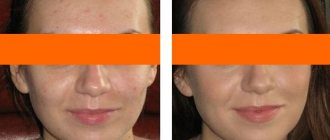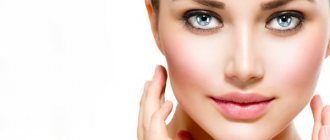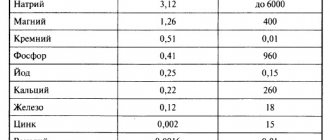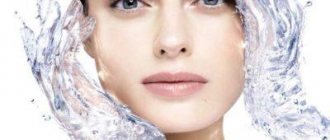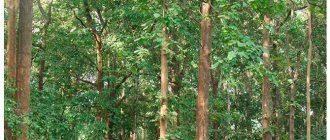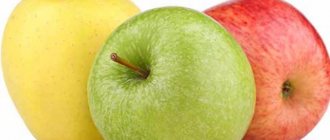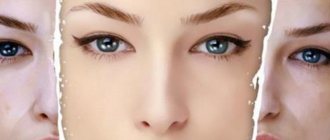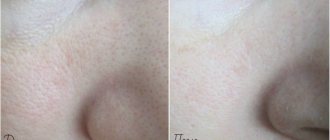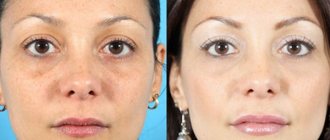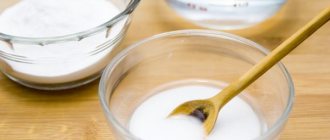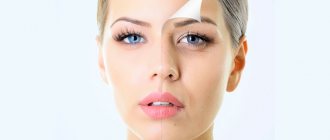Home » FACE MASKS
Category: FACE MASKS
Mango is an exotic fruit for our latitudes, but it’s easy to fall in love with it: this fruit has a very harmonious and bright taste. In the world, especially in warm countries, it is incredibly popular and even bears the title of “king of fruits.” Surprisingly, he left behind apples, oranges, and bananas.
Mangoes grow in hot climates; the main exporting countries are India, China, Thailand, and Indonesia. The first is considered the birthplace of the fruit - that is, it was from there that the spread of this culture began. In India, moreover, mango is a national plant, one of the symbols of the state.
In countries where this fruit grows, it is actively used in local cuisine. We are mainly talking about desserts and salads, but mango also rhymes with meat and seafood - for example, in the form of sauce.
The fruits are also used in folk medicine, because mangoes are rich in beneficial substances. It contains:
- B vitamins;
- Pectin (in green fruits);
- Niacin;
- Folic acid;
- Phylloquinone;
- Retinol;
- Vitamin C;
- Calcium;
- Magnesium;
- Phosphorus;
- Iron;
- Potassium;
- Zinc.
It is believed that eating mangoes is good for the brain, heart and blood vessels.
But tropical beauties know that this fruit is also a great helper in skin and hair care. We have prepared for you the most interesting and effective recipes for mango-based masks that can easily be made at home. The main thing is to resist and not eat them before applying, because fresh mango has a fabulous aroma.
The fruit can prevent early wrinkles, restore healthy color and radiance to the skin, get rid of dark circles under the eyes, moisturize, normalize the functioning of the sebaceous glands, relieve inflammation, and refresh.
In order for the effect of cosmetic procedures to be maximum, you need to find ripe, high-quality mangoes (which, by the way, is not so easy) and make sure that you are allergic to the fruit - to do this, just apply the mango pulp on your hand and see if whether itching and redness occurred within half an hour. If everything is in order, feel free to arrange a tropical beauty salon at home!
Benefits of tropical fruit for skin
The cause of cosmetic defects on the face is a lack of nutrients. Mango contains:
- Retinol - helps retain moisture in cells, reduces the severity of inflammation.
- Vitamin C – increases local immunity, accelerates metabolic processes in cells.
- Folic acid. Enhances protection from environmental influences.
- Choline and phylloquinone. They take care of the face, brightening it, soothing irritation, and reducing facial wrinkles.
Photo: 24tv.ua
Beneficial properties of mango
Mango fruits have antiviral, antimicrobial, antifungal properties.
Mango is rich in antioxidants, and they are known to prevent the aging process of the body and protect it from harmful environmental influences. The main antioxidant in mango is mangiferin. It helps the tree grow and bear fruit for up to 300 years.
Mango is a champion in beta-carotene content, which stimulates cell renewal.
Mango contains a large amount of vitamin C. It causes cells to produce collagen, which makes the skin fresh and elastic.
Mango contains almost all B vitamins. Thanks to them, mango pulp has softening, soothing and restorative properties.
The astringents contained in the fruit help restore the skin. In addition, they improve skin health, tighten pores, and affect sebum production. But the riper the fruit, the less binding substances it contains.
Mango fruits are rich in microelements. For dry, sensitive, oily and problematic skin, elements such as calcium, zinc, and magnesium are useful.
Mangoes contain polyunsaturated fats Omega-3, Omega-6, Omega-9. Thanks to them, the skin becomes soft and elastic.
Who is the mango mask suitable for?
The combination of beneficial components provides the effect of using mango on the face for the following skin types:
- Problematic. Needs to eliminate inflammation, heal wounds after acne and pustules.
- Dry. She needs hydration, moisture retention in cells, and cleansing without damaging the lipid layer.
- Subject to age-related changes. Mango has a lifting effect on the face and reduces wrinkles.
Mango fights facial problems without having a drying or tightening effect. Therefore, masks with it are less effective in solving oily skin problems.
Photo: healthbeautytips.in
Contraindications and precautions
Mango is an exotic fruit, so its use for cosmetic purposes should be treated with caution. It has its own contraindications, which include:
- allergy to fruit components;
- infectious and non-infectious inflammatory processes on the skin;
- facial rosacea and vascular network;
- rehabilitation period after surgical interventions on the facial skin;
- the presence of open wounds, ulcers, burns or frostbite on the surface of the facial epidermis.
In other cases, mango masks are completely harmless. They can be used during pregnancy and breastfeeding, as well as to combat skin defects in adolescence.
As for precautionary measures, nothing special needs to be done in this case. You just need to make sure that the mask mixture does not get on the mucous membrane of the eyes, as it can cause irritation and tearing. If this happens, you need to wash your face with running water until the unpleasant symptoms disappear completely.
Homemade mango masks are a good alternative to expensive cosmetic products. But they also have contraindications and rules of use. Compliance with them will allow you to achieve a good effect from the procedures performed, and will make mask compositions from the sweet exotic fruit as safe as possible.
How to choose the main ingredient
For a mango mask to work, you need to choose the right fruit. Can not use:
- Canned product. During conservation, most of the elements beneficial to the skin are destroyed. The taste does not suffer from this, but in the form of a mask such mango is ineffective.
- Rotten fruit. When rotting, bacteria actively multiply in it. They even penetrate normal-looking areas. Since mangoes are not cooked, using them will expose these bacteria to your face. With microtraumas, infection will occur and existing inflammation will worsen.
- Green mango. The maximum concentration of beneficial elements is found in ripe fruit. In addition, before applying the product to the face, the pulp must be crushed, and this is very difficult to do with unripe fruit.
For the mango mixture to have a positive effect on the face, the fruit must be ripe, juicy, and not spoiled. Otherwise, the mask may cause harm.
Mango - what is it
Mango - what kind of fruit is it and what mango masks can be made at home? This is what we will talk about today.
Mangoes are the fruits of plants of the genus Mango of the Anacardiaceae family.
Source Wikipedia
Green unripe fruits contain starch in large quantities. As it ripens, it turns into simple carbohydrates: glucose, sucrose, maltose. Unripe mangoes are a valuable source of pectin, the content of which decreases markedly after pit formation. The unripe fruit is very sour due to the oxalic, citric, malic and succinic acid it contains. Green mango contains 2 times more vitamin C than lime. It contains vitamins B1, B2, niacin.
The ripe fruit tastes sweet and has a pleasant aroma. It contains a lot of sugar and vitamins, but few acids.
Its fruits are used in folk medicine in India and other Asian countries to strengthen the heart muscle, stop bleeding, and improve brain activity.
You will get more information about mangoes by reading the article.
Preparing effective face masks with mango
Face mask recipes include using juice or mashed pulp. All ingredients must be prepared immediately before use. When juice or pulp is stored for a long time in the refrigerator, the beneficial substances disappear from it. And in air, elements oxidize, which reduces efficiency.
For age spots
A mango face mask removes excess melanin from epidermal cells, thus eliminating age spots. To prepare it, you will need 1 tsp. lime juice, unsweetened yogurt and white clay, as well as 2 tsp. freshly squeezed mango juice and 15 drops of salicylic acid. Mix all ingredients until smooth.
Apply only to areas with age spots, if possible avoiding clean skin nearby. It is best to do this with a sponge or cotton swab. Leave the mixture for 7 minutes, rinse with lukewarm water.
For oily and problem skin
For problem skin, it is important not only to cleanse it of impurities, but also to restore the structure of the epidermis. A mask made from mango juice (1 tbsp), bodyagi (1 tsp), and plantain herb (1 tsp) can cope with this. Crush the plantain herb and thistle into powder using a coffee grinder. Pour in the juice and stir until smooth. Apply it to your face and leave for 12-15 minutes.
Wash with water and lemon juice or infusion of viburnum leaves.
For dry skin
If scrubs or peelings cause dryness, you should prepare a mixture with honey. To do this, mix a tablespoon of mashed pulp with liquid honey until smooth. Apply the mixture to your face and leave for 20-30 minutes. Rinse with warm water or chamomile decoction. Mango face masks tone, soften the epithelium, and eliminate flaking.
From blackheads
Most blackhead removers dry out your face. Adding a tropical fruit will smooth out this effect. To prepare the peeling, you will need 1 tsp mango juice, 2 tsp. yellow clay and 2-3 aspirin tablets, crushed into powder. The ingredients are mixed and applied to pre-steamed skin. Keep the mask on your face for no more than 10 minutes.
After rinsing, be sure to use a product to close the pores - grapefruit or lemon juice.
Soothing mask
At 2 tbsp. l. Mango pulp will require 1 tsp. chamomile oils. Mix the ingredients, apply to the face and leave for 10-15 minutes. Rinse with warm water and apply nourishing cream 15-20 minutes after the procedure.
The mask relieves redness after other procedures and prevents dryness after prolonged exposure to cold air.
For wrinkles
This recipe requires you to first prepare the oatmeal. It should turn out thick, like sour cream. For 1 cup of oatmeal you will need 0.5 cups of mango pulp and 1 tbsp. liquid honey. Mix all ingredients until smooth, apply for 15-20 minutes, rinse with lukewarm water.
Anti-aging lifting
A mask made from mango pulp (2 tbsp), olive oil (1 tbsp) and starch (1 tbsp) will help tighten the contours of the face and smooth out small wrinkles. Mix all ingredients and apply to face. Leave until a tightness effect appears. Rinse off with cool water and let the skin rest for 15-20 minutes, then apply a moisturizer.
Mango scrub
The difference between a scrub and a mask is the small abrasive particles that, when rubbed, exfoliate the keratinized epithelium. To prepare a mango-based scrub, in 1 tbsp. add 1 tsp of mashed fruit pulp. crushed oatmeal.
Stir until smooth and leave for 15-20 minutes. Massage the skin
Mango Butter Recipes
Mango essential oil for the face can be purchased at a pharmacy or cosmetic store. This product replaces pulp or juice; it is used when it is not possible to get fresh fruit. Recipes for masks with mango butter:
- From wrinkles. Take 1 tsp. mango oil and kelp extract, mix and add 1 tbsp. l. rice starch. Apply the composition for 15-20 minutes. Rinse off and use a cooling gel to moisturize and soothe the skin.
- Nourishing and moisturizing mask for normal skin. You will need 1 egg and 1 tsp. mango and sea buckthorn oils. It is better to take a quail egg. Heat the oils in a water bath and combine with the egg. Beat the mixture and apply it for 20 minutes. After rinsing with cold water, lubricate your face with moisturizer.
- A revitalizing blend for dry skin. To prepare it you will need 1 tsp. mango and hazelnut oils, as well as 1 tsp. cottage cheese and sour cream. Mix all ingredients until smooth and apply to face, pressing onto skin. 15 minutes after application, rinse off with cold water.
For care, you cannot use expired mango oil, since it does not contain useful substances and hostile flora multiplies.
Contraindications for use
Mango is an exotic fruit that is one of the strong allergens. Therefore, before using it, you need to apply part of the mask to your elbow or earlobe. If redness, itching, or a rash appear, you will have to discard the mask.
If the mixture gets on open wounds, pain and itching may occur. If this happens, the product should be washed off and not used until the injuries heal.
Any masks should be used no more than 2 times a week. This is enough to saturate the skin with the necessary substances. More frequent use of masks disrupts metabolic processes.
Pattern and smell
Naturally, inside the bag there is a pattern of the mask. It is well soaked, but without excess. It doesn't drip like the Unicorn Approve mask.
In the photo below, I deliberately placed the pattern against the background of the ruler so that you can estimate its length and width.
